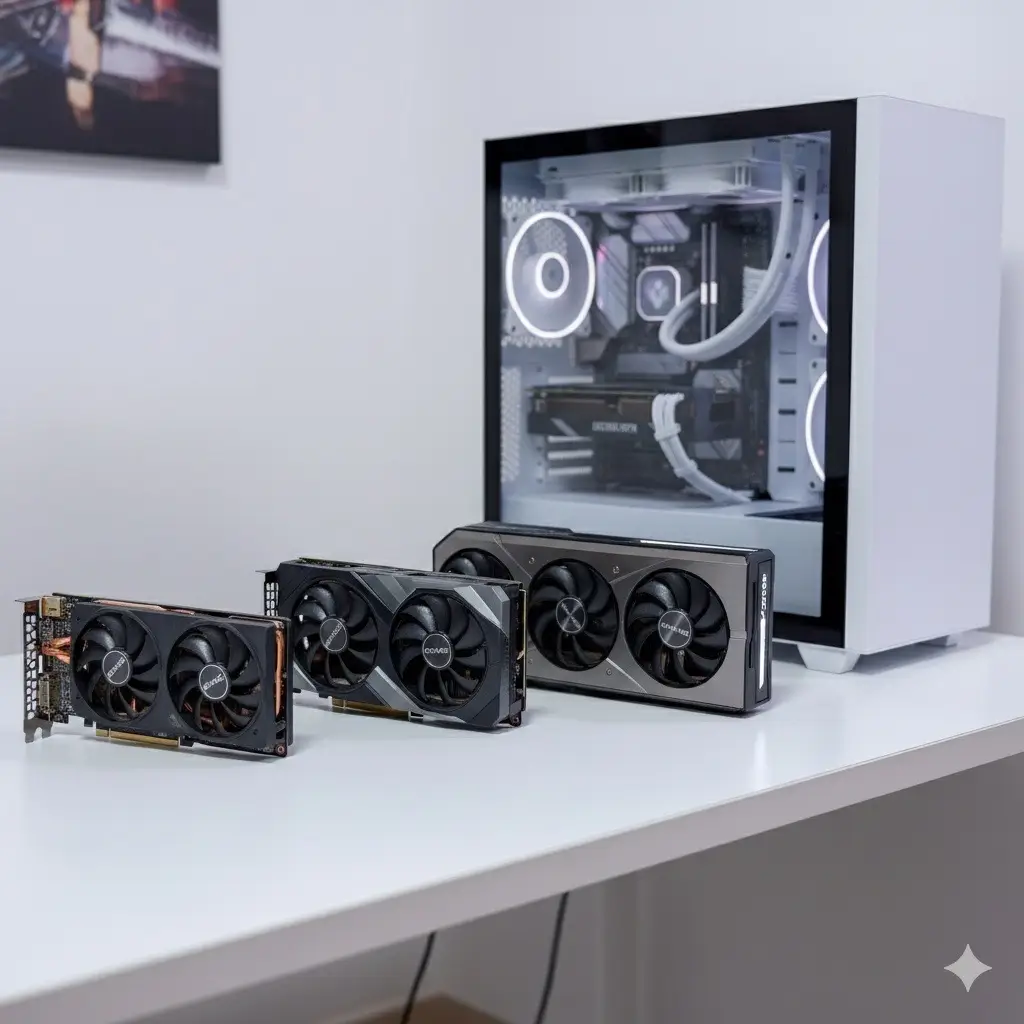
Graphics cards evolve rapidly. A model that was top-tier five years ago might now be mid- or even low-tier. But “old” doesn’t always mean “bad.” Sometimes a used GPU from a past generation can still deliver excellent performance for modern needs. The trick is knowing how to compare different era GPUs, which specs to prioritise, and how to match a GPU to your specific use case. Below, I walk you through comparing GPU generations, the key features to inspect, and how to find one that fits your gaming or creative workload.
When you look at GPUs from different eras — say, a GTX 1080 Ti from 2017 versus a more recent mid-range card — a few principles help you see whether they’re comparable:
LogicalIncrements’ graphics cards comparison page helps you see where GPUs of various eras and levels fit in terms of real-world performance and relative tiers. It allows you to see, for example, that a second-hand higher-end older GPU might match or even outperform certain newer mid-tier options. (Source: LogicalIncrements graphics card comparison)
So, when you compare GPUs across generations, match them not just on model name or release year but on performance metrics, modern feature support, and future viability.
When you’re in the market for a GPU — whether brand new or second-hand — here are the key criteria to evaluate. Think of them as your checklist.
Always check benchmarks (e.g. in games or synthetic tests) rather than judging solely by model name or “tiers.” A mid-range modern GPU may outperform an older high-end card under certain conditions. Look for real-world benchmarks at resolutions you plan to use (1080p, 1440p, 4K).
If you intend to run high resolutions, high texture settings, or use GPU-accelerated creative workloads, VRAM matters a lot. Try to aim for a GPU that gives you enough headroom (e.g. 8 GB minimum for modern 1080p/1440p gaming, more for 4K or heavy workloads). Also consider the memory speed and bus width, which determine bandwidth.
Check the GPU’s TGP (Total Graphics Power) or board power requirement. Can your PSU support it (wattage and connectors)? Will your case handle heat and airflow? Even a powerful GPU is useless if your power supply is weak or the card overheats.
Review how the card is cooled: number of fans, heatpipe design, backplate, airflow, etc. Lower noise and stable temperatures are important, especially if you want long life or quiet operation.
Look for features like hardware ray tracing, support for upscaling (DLSS, FSR, XeSS etc.), PCIe version support, and driver support longevity. A GPU that includes more modern features gives you breathing room as games evolve.
Even two identical GPUs (chipset-wise) can differ in how well they are built, their cooling solution, fan bearings, PCB quality, etc. Also check warranty (especially relevant for used GPUs) and whether you can get it from a trusted source.
Balance all the above points with price. A GPU that’s slightly slower but much cheaper might be better for your use case. Always compare performance per dollar (or per watt) to find a sweet spot.
Choosing a GPU is not about picking “the most powerful.” It’s about matching your hardware to how you intend to use it. Here’s how to decide:
GPUs across eras can still be directly comparable — but only if you dig beneath model names and marketing. Newer architectures, memory improvements, and feature support shift the performance balance. When buying a GPU — new or used — always examine benchmarks, power requirements, thermals, and feature sets. But the most important thing is matching the GPU to what you plan to do: gaming resolution, creative workloads, or energy efficiency. A well-chosen GPU doesn’t have to be the latest — it just needs to be the right tool for your job.